|
|
 Tornadoes Tornadoes
What is a tornado?
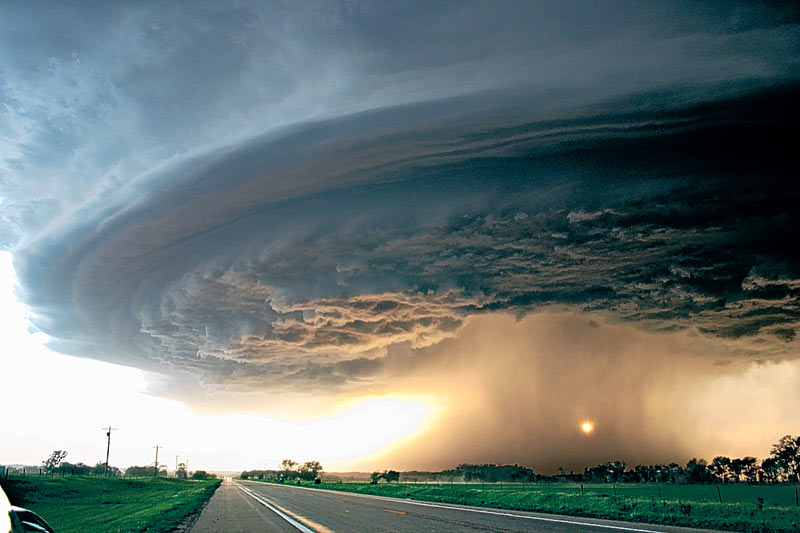 A tornado is a violent rotating
column of air extending from a thunderstorm to the ground. The most violent
tornadoes are capable of tremendous destruction with wind speeds of up to 300
mph. They can destroy large buildings, uproot trees and hurl vehicles hundreds
of yards. They can also drive straw into trees. Damage paths can be in excess
of one mile wide to 50 miles long. In an average year, 1000 tornadoes are
reported nationwide.
A tornado is a violent rotating
column of air extending from a thunderstorm to the ground. The most violent
tornadoes are capable of tremendous destruction with wind speeds of up to 300
mph. They can destroy large buildings, uproot trees and hurl vehicles hundreds
of yards. They can also drive straw into trees. Damage paths can be in excess
of one mile wide to 50 miles long. In an average year, 1000 tornadoes are
reported nationwide.
How do tornadoes form?
Most tornadoes form
from thunderstorms. You need warm, moist air from the Gulf of Mexico and cool,
dry air from Canada. When these two air masses meet, they create instability in
the atmosphere. A change in wind direction and an increase in wind speed with
increasing height creates an invisible, horizontal spinning effect in the lower
atmosphere.
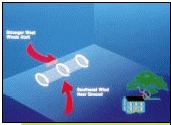   Rising air within the updraft tilts the rotating air from
horizontal to vertical.
An area of rotation, 2-6 miles wide, now extends
through much of the storm. Most strong and violent tornadoes form within this
area of strong rotation.
Rising air within the updraft tilts the rotating air from
horizontal to vertical.
An area of rotation, 2-6 miles wide, now extends
through much of the storm. Most strong and violent tornadoes form within this
area of strong rotation.
What is a funnel cloud?
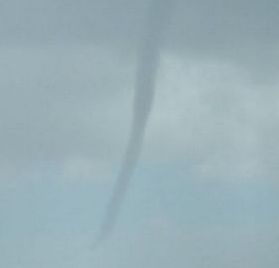
A funnel cloud is a rotating
cone-shaped column of air extending downward from the base of a thunderstorm,
but not touching the ground. When it reaches the ground it is called a
tornado.
How do tornadoes stop?
It is not fully understood about how exactly
tornadoes form, grow and die. Tornado researchers are still trying to solve the
tornado puzzle, but for every piece that seems to fit they often uncover new
pieces that need to be studied.
What is a waterspout?
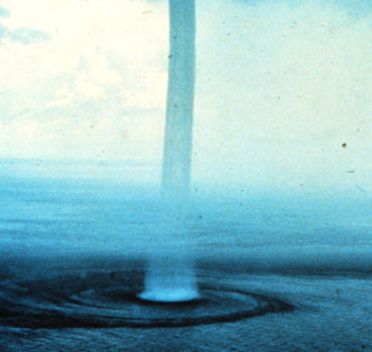 A waterspout is just a weak tornado that forms over water. They are most common along the Gulf
Coast. Waterspouts can sometimes move inland, becoming tornadoes causing damage
and injuries.
A waterspout is just a weak tornado that forms over water. They are most common along the Gulf
Coast. Waterspouts can sometimes move inland, becoming tornadoes causing damage
and injuries.
What is a gustnado?
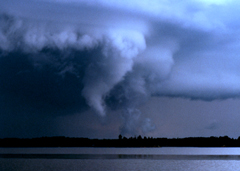 A gustnado is a short-lived, relatively weak
whirlwind that forms along a gust front. A gust front is the surge of very
gusty winds at the leading edge of a thunderstorm's outflow of air. Gustnadoes
are not tornadoes. They do not connect with any cloud-base rotation. But
because gustnadoes often have a spinning dust cloud at ground level, they are
sometimes wrongly reported as tornadoes. Gustnadoes can do minor damage.
A gustnado is a short-lived, relatively weak
whirlwind that forms along a gust front. A gust front is the surge of very
gusty winds at the leading edge of a thunderstorm's outflow of air. Gustnadoes
are not tornadoes. They do not connect with any cloud-base rotation. But
because gustnadoes often have a spinning dust cloud at ground level, they are
sometimes wrongly reported as tornadoes. Gustnadoes can do minor damage.
What is a landspout?

A landspout is a very weak
tornado that is not associated with a wall cloud or a mesocyclone. It is the
land equivalent of a waterspout.
When are tornadoes most likely to occur?
Tornadoes can happen at any
time of the year and at any time of the day. In the southern states, peak
tornado season is from March through May. Peak times for tornadoes in the
northern states are during the summer. A few southern states have a second peak
time for tornado outbreaks in the fall. Tornadoes are most likely to occur
between 3 p.m. and 9 p.m.
Where are tornadoes most likely to occur?
The geography of the central part of the United
States, known as the Great Plains, is suited to bring all of the ingredients
together to forms tornadoes. More than 500 tornadoes typically occur in this
area every year and is why it is commonly known as "Tornado Alley".
|
|